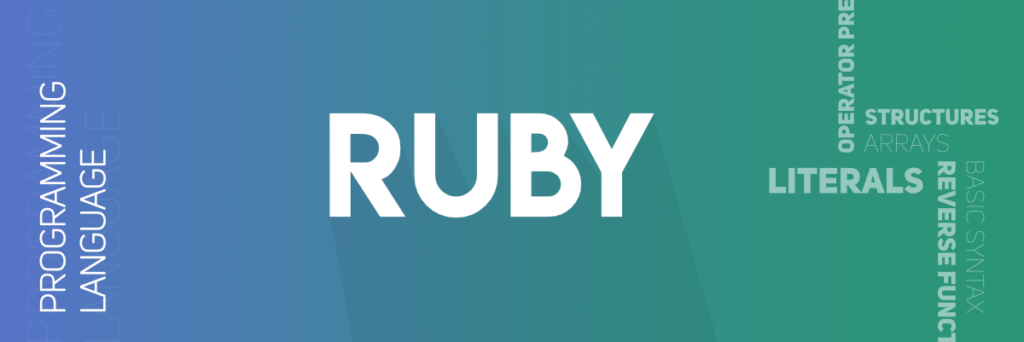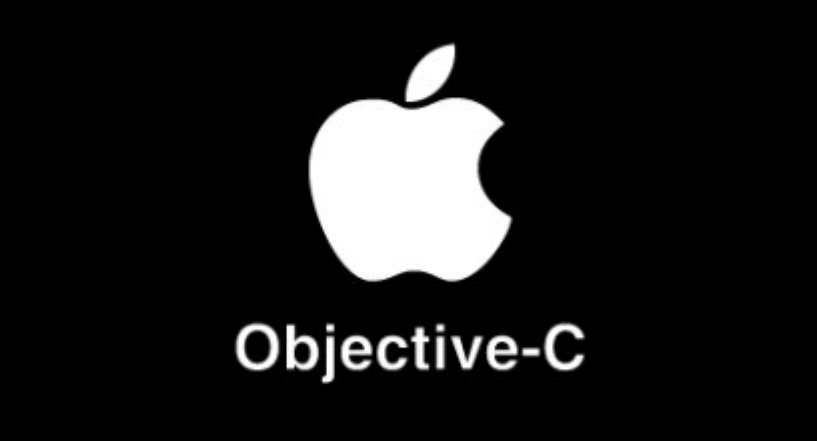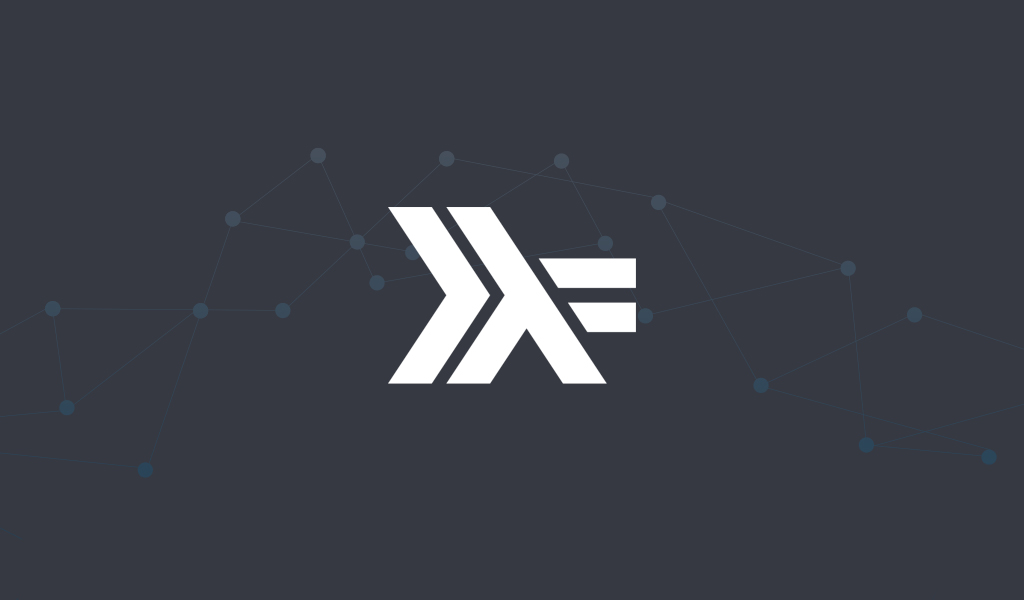There was a time when FORTRAN and COBOL were ruling the programming world but now they are completely gone. However, if we observe closely we will find that the new generation of developers tend to embrace other languages and frameworks which they find easier to work with. Which is why it is more important for developers/programmers to understand what programming languages are likely to be doomed or vanish? So that they can equip themselves for safer or the better future.
Below is the list of those 5 Programming Languages that may vanish in future!

1. Ruby
Ruby, a dynamic and object-oriented programming language, has emerged as a powerful force in the world of software development. Designed for simplicity and productivity, Ruby combines elegant syntax with flexibility, making it a favorite among developers for various applications. This essay explores the key features, history, and significance of Ruby in the ever-evolving landscape of programming languages.
Ruby was conceived by Yukihiro Matsumoto, known as “Matz,” in the mid-1990s in Japan. Matsumoto aimed to create a language that emphasized simplicity and productivity without sacrificing performance. The first official release of Ruby, version 0.95, came in 1995. Over the years, it has undergone several updates, with the latest stable version being Ruby 3.0, released in 2020.
Key Features:
- Elegance of Syntax: Ruby is celebrated for its clean and elegant syntax, which prioritizes readability and expressiveness. Its syntax is designed to be natural and intuitive, resembling human language. This feature contributes to the ease with which developers can write and understand Ruby code.
- Dynamic Typing and Duck Typing: Ruby is dynamically typed, allowing for flexibility in variable assignments and eliminating the need for explicit type declarations. It embraces the concept of duck typing, where the suitability of an object for a particular purpose is determined by its behavior rather than its class. This dynamic nature enhances code flexibility and adaptability.
- Object-Oriented Nature: Ruby is a fully object-oriented language, meaning everything in Ruby is an object. This object-oriented paradigm fosters modular and reusable code. Methods and data are encapsulated within objects, promoting a clean and organized approach to software design.
- Metaprogramming Capabilities: One of Ruby’s distinguishing features is its robust support for metaprogramming. Developers can modify the behavior of programs during runtime, allowing for dynamic and efficient code generation. This feature facilitates the creation of expressive and concise code.
- Community and Gems: Ruby boasts a vibrant and supportive community. The RubyGems package manager allows developers to easily share and distribute software libraries, known as gems. The extensive collection of gems covers a wide range of functionalities, accelerating development by providing pre-built solutions to common problems.
Significance in Software Development:
Ruby gained widespread popularity with the advent of the Ruby on Rails (RoR) web framework. RoR, often referred to simply as Rails, is built on top of Ruby and follows the convention over configuration (CoC) and don’t repeat yourself (DRY) principles. Rails simplifies the development of robust and scalable web applications, further propelling Ruby into the mainstream.
Beyond web development, Ruby finds applications in automation scripts, data analysis, and various other domains. Its versatility, combined with an active and engaged community, positions Ruby as a language that continues to evolve and adapt to the changing needs of the software development landscape.
Conclusion:
In conclusion, Ruby stands out as a programming language that marries elegance with power. Its clean syntax, dynamic typing, and object-oriented nature make it a joy to work with, while its metaprogramming capabilities and supportive community contribute to its significance in the broader realm of software development. Whether building web applications with Ruby on Rails or exploring its applications in diverse domains, Ruby continues to leave an indelible mark on the world of programming.

2. Objective-C
Objective-C is a programming language primarily used for software development on Apple’s macOS and iOS platforms. It has a long history and has played a pivotal role in the creation of applications for Apple devices. Here’s an overview of its key features, history, and common use cases:
Key Features:
- Object-Oriented: Objective-C is an object-oriented language, which means it uses classes and objects to organize code. It supports concepts like encapsulation, inheritance, and polymorphism.
- Dynamic Typing: Objective-C is dynamically typed, allowing for flexibility in assigning and manipulating data types. This dynamic nature can be advantageous in certain scenarios but also requires careful handling.
- Message Passing: Communication between objects in Objective-C is achieved through message passing. Objects send messages to each other, and the runtime system determines the appropriate method to execute. This dynamic messaging system provides flexibility during runtime.
- C Integration: Objective-C is an extension of the C programming language. This integration allows developers to use C and C++ code within Objective-C projects, making it compatible with existing codebases.
- Automatic Reference Counting (ARC): Objective-C traditionally used manual memory management. However, Automatic Reference Counting (ARC) was introduced to automate memory management tasks, reducing the likelihood of memory leaks.
- Frameworks: Objective-C is commonly used with Apple’s frameworks, such as Cocoa and Cocoa Touch. These frameworks provide pre-built components and tools for developing applications for macOS and iOS.
History:
Objective-C was created by Brad Cox and Tom Love in the early 1980s. It gained prominence when NeXT Computer, founded by Steve Jobs after leaving Apple, adopted Objective-C as the primary language for its NeXTSTEP operating system. When Apple acquired NeXT in 1997, Objective-C became integral to Apple’s software development ecosystem.
Objective-C continued to be the primary language for macOS and iOS development until the introduction of Swift in 2014. While Swift has become the preferred language for new Apple projects, Objective-C code remains prevalent, and the two languages can be used together in the same project.
Common Use Cases:
- iOS and macOS App Development: Objective-C has been a cornerstone for developing applications for Apple’s mobile and desktop platforms. It is used to create a wide range of apps, from simple utility applications to complex, feature-rich software.
- Legacy Codebases: Many existing iOS and macOS projects were written in Objective-C. These codebases are still maintained and updated, and developers may need to work with Objective-C when dealing with legacy applications.
- Integration with C Libraries: Objective-C’s integration with C allows developers to use existing C libraries in their projects. This is particularly useful when working with low-level system programming or when leveraging third-party C-based libraries.
- Cross-Platform Development: While Objective-C is primarily associated with Apple platforms, developers have used it for cross-platform development, creating applications that can run on both macOS and Windows.
Conclusion:
Objective-C has a rich history and has been a crucial language in the Apple development ecosystem. While Swift has become the language of choice for many new projects, Objective-C remains relevant due to its extensive use in existing codebases. Developers working in the Apple ecosystem may encounter Objective-C when maintaining or updating older applications, making it a valuable skill for iOS and macOS development.

3. Perl
Perl, Practical Extraction and Reporting Language, is a high-level, general-purpose programming language known for its flexibility, practicality, and strong text processing capabilities. Developed by Larry Wall in the late 1980s, Perl has evolved into a powerful scripting language widely used for various tasks, including system administration, web development, and network programming.
Key Features:
- Text Processing and Regular Expressions: Perl excels in text processing, thanks to its robust support for regular expressions. The language provides native and concise syntax for pattern matching, making it a favorite for tasks such as parsing log files, extracting data, and manipulating strings.
- Practicality and Versatility: Perl’s motto, “There’s more than one way to do it” (TMTOWTDI), reflects its philosophy of providing multiple approaches to problem-solving. This flexibility allows developers to choose the most suitable and expressive solution for a given task.
- Platform Independence: Perl is platform-independent, running on various operating systems, including Unix, Linux, Windows, and macOS. This cross-platform compatibility has contributed to Perl’s popularity in diverse computing environments.
- CPAN – Comprehensive Perl Archive Network: CPAN is a vast repository of Perl modules and scripts contributed by the Perl community. It simplifies the process of finding and integrating third-party libraries, enhancing Perl’s capabilities for a wide range of applications.
- Regular Releases: Perl undergoes regular releases, with a commitment to maintaining backward compatibility. This ensures that existing Perl code remains functional, and developers can benefit from the latest features and improvements.
Common Use Cases:
- Scripting and Automation: Perl is widely used for scripting and automation tasks, especially in system administration. Its concise syntax and powerful text-processing capabilities make it an efficient choice for creating scripts that automate routine tasks.
- Web Development: Perl gained popularity in the early days of the web for CGI (Common Gateway Interface) scripting. While its role in web development has diminished with the rise of more specialized languages and frameworks, Perl is still used for certain web applications and backend processes.
- Bioinformatics: Perl has found extensive use in bioinformatics for processing and analyzing biological data. Its text-processing capabilities and flexibility make it well-suited for tasks such as parsing genetic sequences and handling bioinformatics databases.
- Network Programming: Perl is often employed for network programming tasks, such as creating network utilities and handling socket programming. Its versatility and ease of use make it a practical choice for writing networking applications.
Criticisms and Challenges:
- Readability: Perl’s flexibility can lead to code that is less readable, especially for developers unfamiliar with the language. The “write-only” nature of Perl code, as humorously described by some, can pose challenges for collaboration and maintenance.
- Competition with Modern Languages: In recent years, Perl has faced competition from modern scripting languages like Python and Ruby. These languages often offer cleaner syntax and more extensive standard libraries, attracting developers who prioritize readability and ease of use.
Conclusion:
Perl, with its origins in text processing and practicality, has carved a niche for itself in the programming world. While its prominence in web development has diminished, Perl remains a valuable tool for tasks that demand strong text-processing capabilities and rapid scripting. As technology continues to evolve, Perl’s legacy endures, and its strengths in specific domains ensure its continued relevance in the programming landscape.

4. R (programming)
R is a powerful and versatile programming language and environment designed for statistical computing, data analysis, and graphical representation. Developed by Ross Ihaka and Robert Gentleman at the University of Auckland, New Zealand, in the early 1990s, R has become a prominent language in the field of statistics and data science.
Key Features:
- Open Source and Community-Driven: R is an open-source language, allowing users to view, modify, and distribute the source code. The R community actively contributes to its development, creating a rich ecosystem of packages and resources for statistical analysis and data visualization.
- Statistical Analysis and Data Visualization: R excels in statistical modeling and analysis. It provides a vast array of statistical functions and libraries for tasks such as regression analysis, hypothesis testing, and machine learning. Additionally, R has robust capabilities for creating high-quality graphics and visualizations.
- Data Manipulation and Cleaning: R offers powerful tools for data manipulation and cleaning. The tidyverse, a collection of R packages, provides a consistent and coherent set of functions for working with data, making tasks like reshaping, filtering, and summarizing datasets more intuitive.
- Data Import and Export: R supports a wide range of data formats, including CSV, Excel, databases, and more. This flexibility makes it easy to import and export data from various sources, facilitating seamless integration into different workflows.
- Reproducibility: R promotes reproducibility in data analysis. The use of scripts and markdown documents allows researchers and analysts to document and share their work, ensuring that analyses can be replicated and results verified.
- Extensibility and Package System: R’s extensibility is a key feature. Users can create their functions and packages, extending the language’s capabilities. The Comprehensive R Archive Network (CRAN) hosts a vast collection of packages contributed by the community, covering a broad spectrum of statistical and data analysis tasks.
- Integration with Other Languages: R can be integrated with other languages like C, C++, and Python, enabling users to leverage existing code or libraries written in these languages for specific tasks.
Common Use Cases:
- Statistical Analysis: R is widely used for statistical analysis in various fields, including biology, economics, finance, and social sciences. Its extensive statistical functions and packages make it a go-to tool for researchers and statisticians.
- Data Science and Machine Learning: R is a popular language for data science and machine learning tasks. Libraries like caret, mlr, and TensorFlow for R provide tools for building and evaluating machine learning models.
- Data Visualization: R’s capabilities for data visualization are extensive. The ggplot2 package, for example, offers a grammar of graphics approach, enabling users to create complex and customizable visualizations with ease.
- Bioinformatics: R is frequently used in bioinformatics for analyzing and visualizing biological data. Its statistical functions and visualization capabilities are particularly well-suited for handling complex biological datasets.
Challenges:
- Learning Curve: For beginners, R’s syntax and concepts may present a learning curve, especially for those unfamiliar with programming or statistics. However, numerous resources and tutorials are available to help overcome this hurdle.
- Performance for Large Datasets: While R is efficient for many tasks, it may face challenges with large datasets. In such cases, users often explore techniques like parallel computing or utilize specialized tools.
Conclusion:
R has established itself as a leading language for statistical computing and data analysis. Its comprehensive set of statistical functions, data manipulation tools, and visualization capabilities make it a preferred choice for researchers, analysts, and data scientists across diverse domains. As the field of data science continues to evolve, R’s adaptability and vibrant community ensure its relevance in the data-driven landscape.

5. Haskell
Haskell is a functional programming language that has gained recognition for its elegance, expressive type system, and emphasis on purity and immutability. Developed in the late 1980s by a committee of researchers, including Simon Peyton Jones and Philip Wadler, Haskell is named after Haskell Curry, a logician whose work laid the foundation for functional programming.
Key Features:
- Functional Programming Paradigm: Haskell is a purely functional programming language, which means that functions are first-class citizens, and there is an emphasis on immutability. Functional programming promotes a declarative and expressive coding style, making programs easier to reason about.
- Lazy Evaluation: Haskell uses lazy evaluation, a strategy where expressions are only evaluated when their values are actually needed. This can lead to more efficient use of resources and allows for the creation of potentially infinite data structures.
- Static Typing and Type Inference: Haskell has a strong and static type system that helps catch errors at compile-time. The type system is also expressive and allows for type inference, reducing the need for explicit type annotations in many cases.
- Immutable Data: In Haskell, data is immutable by default. Once a value is assigned, it cannot be modified. This property simplifies reasoning about code and helps prevent common programming errors related to mutable state.
- Monads and Monadic I/O: Haskell introduced the concept of monads, a powerful abstraction for managing side effects in a pure functional language. Monadic I/O is a unique approach to handling input and output operations in a purely functional manner.
- High-Level Abstractions: Haskell provides high-level abstractions for various programming constructs. For example, list comprehensions and pattern matching make code concise and expressive. The language also supports algebraic data types and type classes.
- Concurrency and Parallelism: Haskell is well-suited for concurrent and parallel programming. Its pure functional nature makes it easier to reason about concurrency, and libraries such as
Control.Concurrentprovide facilities for writing concurrent programs.
Common Use Cases:
- Academic and Research Projects: Haskell is frequently used in academic and research settings due to its strong theoretical underpinnings and its suitability for expressing mathematical concepts and algorithms.
- Compiler Construction: Haskell’s expressive type system and powerful abstractions make it an excellent choice for writing compilers and interpreters. The Glasgow Haskell Compiler (GHC) is one of the most widely used Haskell compilers.
- Financial and Scientific Applications: Haskell’s strong type system and mathematical expressiveness make it suitable for applications in finance and scientific computing. Libraries like hmatrix provide support for numerical and linear algebra.
- Web Development: While not as prevalent as in other languages, Haskell is used in web development. Frameworks like Yesod and Servant leverage Haskell’s type system for building robust and statically-typed web applications.
Challenges:
- Learning Curve: Haskell’s emphasis on functional programming and unique features like lazy evaluation can pose a learning curve for developers accustomed to imperative or object-oriented paradigms.
- Limited Industry Adoption: Despite its strengths, Haskell has not seen widespread adoption in industry compared to languages like Java or Python. This may limit the availability of libraries and tools for certain domains.
Conclusion:
Haskell stands out as a language that embodies the principles of functional programming and provides a rich set of abstractions for building expressive and elegant programs. While it may not be the go-to choice for every project, Haskell’s unique features make it a fascinating language for those interested in exploring the frontiers of programming language design and functional programming concepts.



